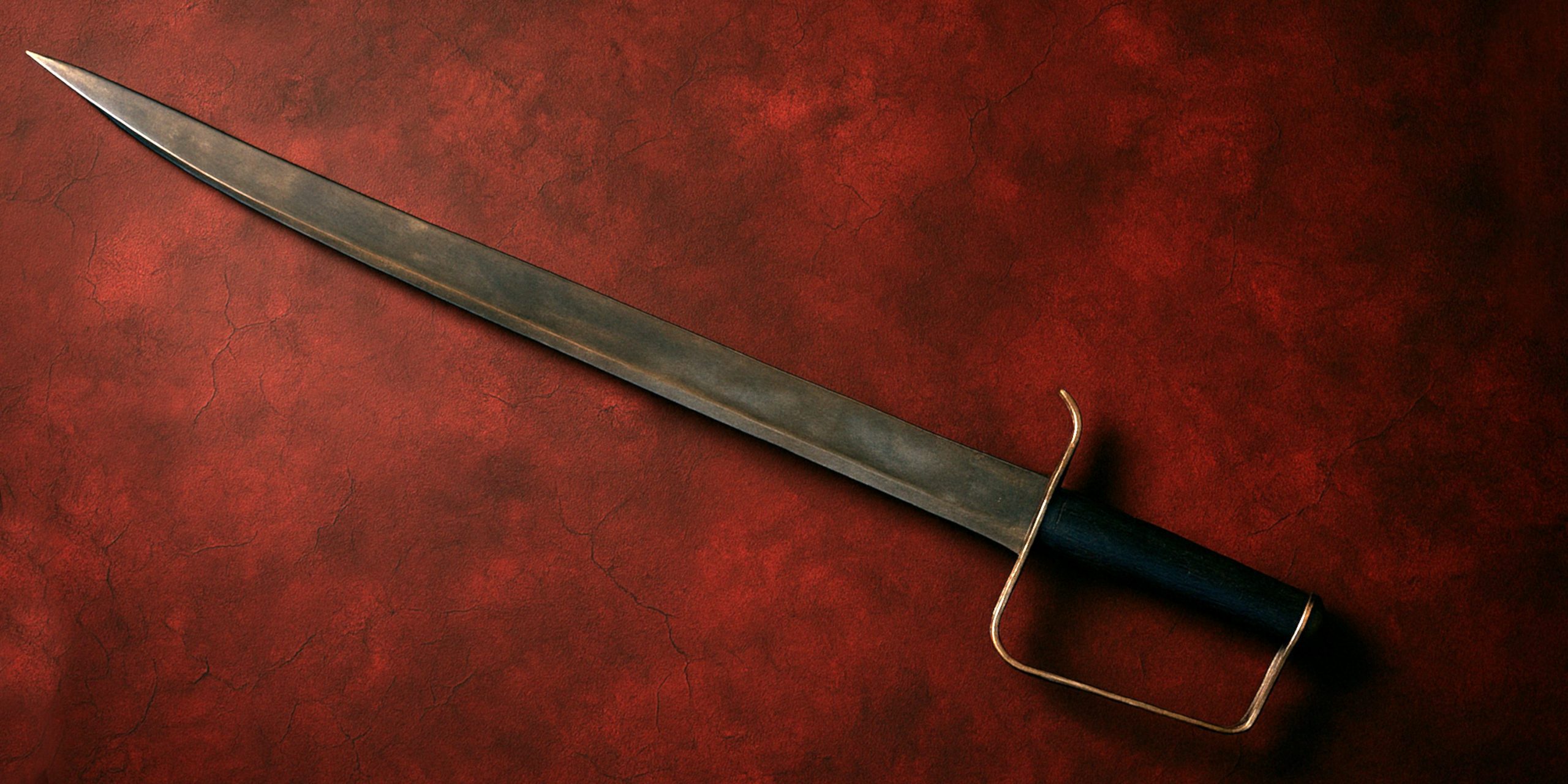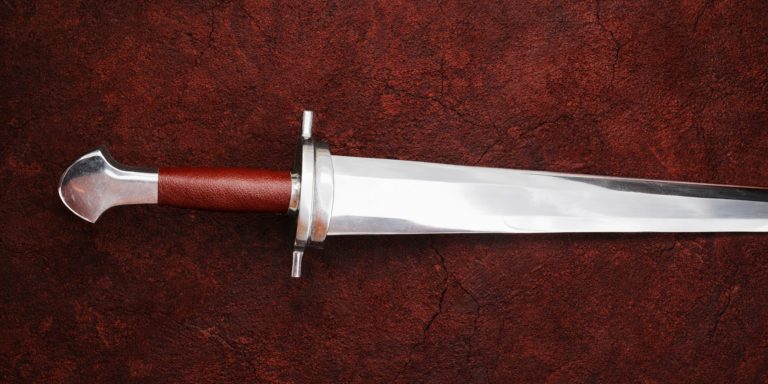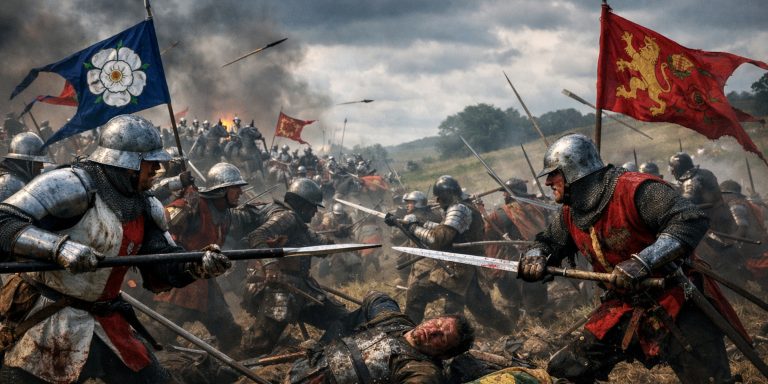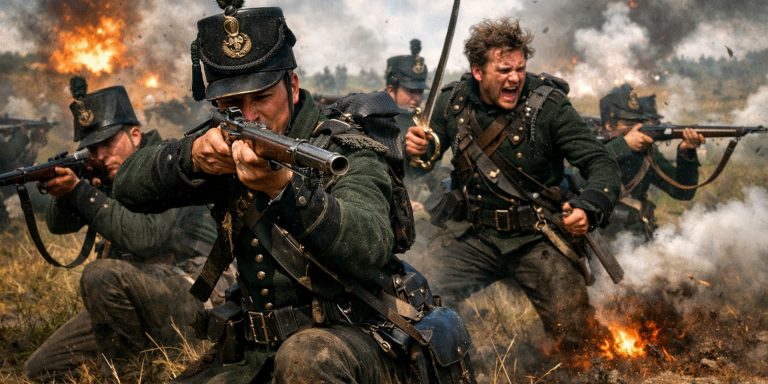
The Confederate D-guard Bowie sword is one of the most recognisable weapons of the American Civil War. Favoured by Southern volunteers in the early years of the conflict, it bridged the gap between hunting knife and battlefield sabre. Hand-forged by local blacksmiths rather than industrial armouries, each blade carried its maker’s character and the soldier’s desperation for a weapon when supply chains failed. Brutal, crude, and effective, the D-guard Bowie became a symbol of the Confederacy’s resourcefulness and defiance.
Specification
| Feature | Detail |
|---|---|
| Type | Large fighting knife / short sword |
| Overall Length | Typically 18–28 inches (46–71 cm) |
| Blade Length | 12–20 inches (30–50 cm) |
| Blade Type | Single-edged, clip-point Bowie style |
| Blade Material | Hand-forged iron or steel (often repurposed files or farm tools) |
| Guard | Prominent D-shaped iron or brass knuckle guard |
| Handle | Wood, bone, or antler, often wrapped in leather |
| Sheath | Leather scabbard, sometimes reinforced with tin or brass |
| Origin | Confederate States of America (c. 1861–1865) |
History and Evolution
- The D-guard Bowie emerged in the early months of the Civil War when Confederate soldiers, especially those in rural militias, lacked standard issue swords or bayonets.
- Southern blacksmiths produced them in small workshops, often using wagon springs, saw blades, or files. No two were identical.
- Their design combined frontier practicality with close-quarters lethality, reflecting the Southern tradition of Bowie knives dating back to the early 19th century.
- Over time, as the war progressed and Confederate supply systems improved, these crude but deadly blades gave way to more conventional sabres and bayonets.
- Many D-guard Bowies were discarded, converted, or kept as personal keepsakes by veterans after the conflict.
Advantages
- Versatility: Could serve as both a knife and short sword.
- Durability: Forged from tough, recycled steel, often capable of heavy blows.
- Ease of Manufacture: Local smiths could produce them quickly with limited tools.
- Psychological Impact: The weapon’s size and brutality intimidated opponents in close combat.
- Cultural Symbol: Represented Southern independence and improvisation.
Disadvantages
- Inconsistency: Quality varied greatly due to lack of standardisation.
- Weight: Many were excessively heavy, tiring the user quickly.
- Balance Issues: Some examples were poorly weighted, reducing combat efficiency.
- Limited Reach: Inferior range compared to full-length sabres.
- Maintenance: Primitive forging made sharpening and upkeep difficult.
Comparison with Similar Weapons
| Weapon | Key Features | Comparison |
|---|---|---|
| US Model 1840 Cavalry Sabre | Long, curved steel blade; factory made | More refined and standardised; better reach and durability |
| Arkansas Toothpick | Double-edged thrusting knife | Lighter and more refined but less effective for slashing |
| Bowie Knife (Civilian) | Clip-point knife, 8–12 inch blade | Smaller, handier; D-guard offered better protection |
| Cutlass | Short naval sword with solid guard | Similar length; D-guard Bowie more primitive but comparable in close quarters |
Legacy
The D-guard Bowie occupies a unique place in American weapon history. It embodies the improvisation and rugged independence of the Confederate soldier. Today, it is less a tool of war and more a piece of folklore, appearing in museums, reenactments, and private collections as a reminder of a conflict fought with ingenuity as much as industry. The crude craftsmanship, irregular design, and bold silhouette have made it a favourite among collectors of 19th-century Americana.
Where to See
You can view authentic examples of Confederate D-guard Bowie swords in several institutions and collections:
- Museum of the Confederacy, Richmond, Virginia
- National Civil War Museum, Harrisburg, Pennsylvania
- Gettysburg National Military Park Museum, Pennsylvania
- Atlanta History Center, Georgia
- Private collections often displayed at Civil War memorabilia shows and auctions across the United States
Collectors Guide
Collectability Factors
- Provenance: Documentation linking the sword to a specific soldier or regiment dramatically increases value.
- Condition: Original grip, guard, and blade integrity are critical. Rust and repair reduce worth.
- Maker’s Mark: Rarely present, but any identifiable blacksmith or region adds value.
- Regional Style: Swords from Tennessee, Georgia, and Texas are especially prized.
- Historical Associations: Items connected to major battles or Confederate units fetch premiums.
Typical Auction Prices (as of recent years)
| Condition | Description | Price Range (GBP) |
|---|---|---|
| Excellent | Clean blade, intact D-guard, documented provenance | £5,000–£8,000 |
| Good | Moderate wear, solid grip, light rust | £2,000–£4,000 |
| Fair | Missing or replaced parts, surface corrosion | £1,000–£2,000 |
| Poor | Heavily rusted or damaged, no provenance | £400–£800 |
Collecting Tips
- Verify authenticity with reputable dealers or appraisal experts.
- Beware of modern reproductions aged to look original.
- Maintain controlled humidity to prevent further corrosion.
- Display horizontally to reduce stress on fragile tangs and guards.
- Consider insuring high-value examples due to rarity.
The Seven Swords Takeaway
The Confederate D-guard Bowie sword remains a raw, visceral artefact of Civil War history. It tells the story of scarcity, improvisation, and the fierce individuality of the Confederate soldier. Though crudely made, its presence endures as both a collector’s prize and a powerful symbol of a divided America.



